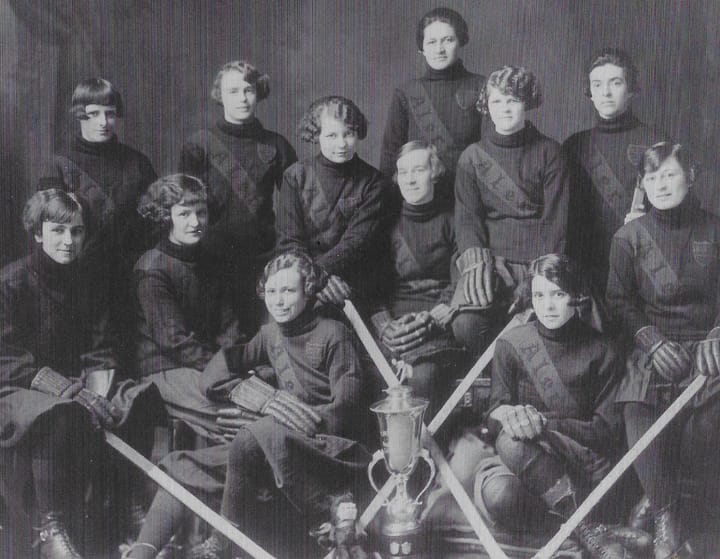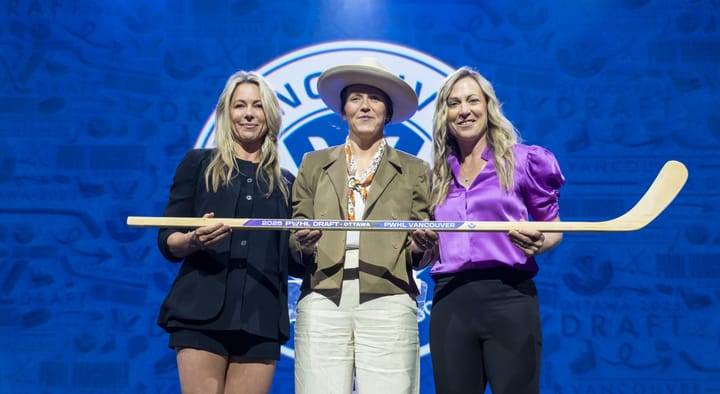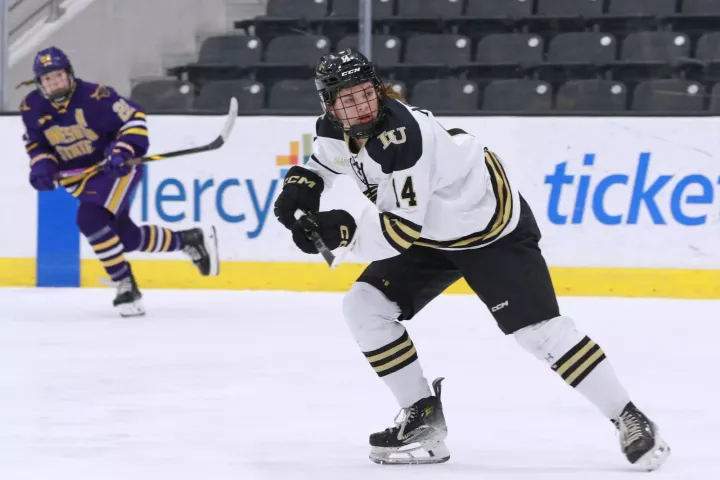The curious case of rookie status in women’s hockey
Is Shannon Szabados a rookie this year?
Shannon Szabados is entering the NWHL with three Olympic appearances under her belt and experience playing pro hockey in men’s leagues. The Canadian hockey hero and household name made a huge splash in the women’s hockey world when she signed across the border with the Buffalo Beauts.
Similarly, last season Noora Räty was a first-year goaltender in the CWHL. She entered the league following four seasons in Finland’s Naisten Liiga, where she excelled in between the pipes. The Finnish Olympian won the Rookie of the Year award in 2005-06 in the Naisten Liiga, an award that is now named after her.
Some considered Räty to be a rookie last season in the CWHL despite her experience outside of North American pro women’s hockey. So, does that mean we should be calling Szabados a rookie in the NWHL? If that doesn’t sit well with you, you aren’t alone.
In women’s hockey, players’ careers in professional leagues are regularly interrupted. They move between leagues, take time off between college and playing in professional ranks, and are called upon to represent their national teams. In short, coming up with a singular definition of rookie is a complicated matter in women’s hockey.
Previous Experience
Within the last few seasons, the number of players who have moved between leagues has grown, and not just in North America.
Blake Bolden left the NWHL for HC Lugano, a women’s team in Switzerland last season. Former Les Canadiennes forward Leslie Oles also moved to the same league. Canadian National Team player and CWHL alum Meaghan Mikkelson joined the SDHL rather than the CWHL following the Olympics.
Within North America, Zoe Hickel and Alex Carpenter were just two of the 13 NWHL players who joined the CWHL ahead of last season. Jess Jones, Rebecca Vint, and Sarah Edney went the opposite way, playing in the NWHL instead of the CWHL.
All of these players have at least one season of professional hockey under their belts. They have experience with the level of play, demands, and the lifestyle of playing pro hockey, which gives them an upper hand over traditional rookies who are most likely coming right out of college.
There are also times when the experience of some players dwarfs their fellow first year classmates. For example, Szabados has been playing with Team Canada since before fellow first-year NWHL goaltender Katie Burt was even in high school. It was a similar situation with Räty and her fellow first year CWHL goaltenders last season. Erika Lawler, who played her first season of NWHL hockey last year at 30 after taking several years off, won her Olympic silver medal when 2018 NWHL Rookie of the Year Hayley Scammura was 16.
That’s not to say national team experience precludes a player from being a rookie. New NWHL players like Lee Stecklein, Hannah Brandt, Nicole Hensley and CWHL prospect Sarah Nurse all look like more traditional rookies. All (with the exception of Hensley who gradated in 2015-16) graduated college in 2016-17, then went straight to centralization or residency. None have previously played in any professional league.
So, when entering or changing leagues, what previous experience should exclude a player from being called a rookie?
Rookie of the Year Awards
According to the CWHL, Räty, Hickel, Carpenter, and others who were playing in their first season in the CWHL after playing in other leagues were considered rookies. Despite all of them being eligible for the Rookie of the Year, none of them were nominated by the teams they played for, the league said. After the teams nominated two players each and the general managers and coaches voted, the 2017 Rookie of the Year nominees were Calgary Inferno’s Sophie Shirley, Vanke Ray’s Cayley Mercer, and Toronto Furies’ Brittany Zuback. Shirley, an 18 year old with no professional experience, was the eventual award winner. It speaks volumes that these women were not considered rookies by their peers, some of whom have been in the CWHL for several years.
The NWHL awarded their first Rookie of the Year award last season. According the NWHL, they did not grant such an award in the first two seasons because there was a case to be made that every player was a rookie. Last season, unlike the CWHL, they did not see a large influx of new players with previous professional experience. However, with the addition of players such as Szabados, the league said they will be looking at eligibility for the Rookie of the Year award in the upcoming season.
Statistically speaking
So, you might be asking yourself why all of this matters.
It matters not only because both leagues have Rookie of the Year Awards, but also because we stand to learn a great deal when we compare players who are in similar circumstances. When we do that, not only do we learn more about their individual performances, but also more about the game itself.
How do first year players adjust to the NWHL and CWHL after their collegiate years compared to players with previous experience playing professional hockey? How might taking a few years away from playing the game on a regular basis impact a player’s development? When we agree upon the definition of the word “rookie” in women’s hockey, we get closer to answering these questions and learning more about the game.





Comments ()